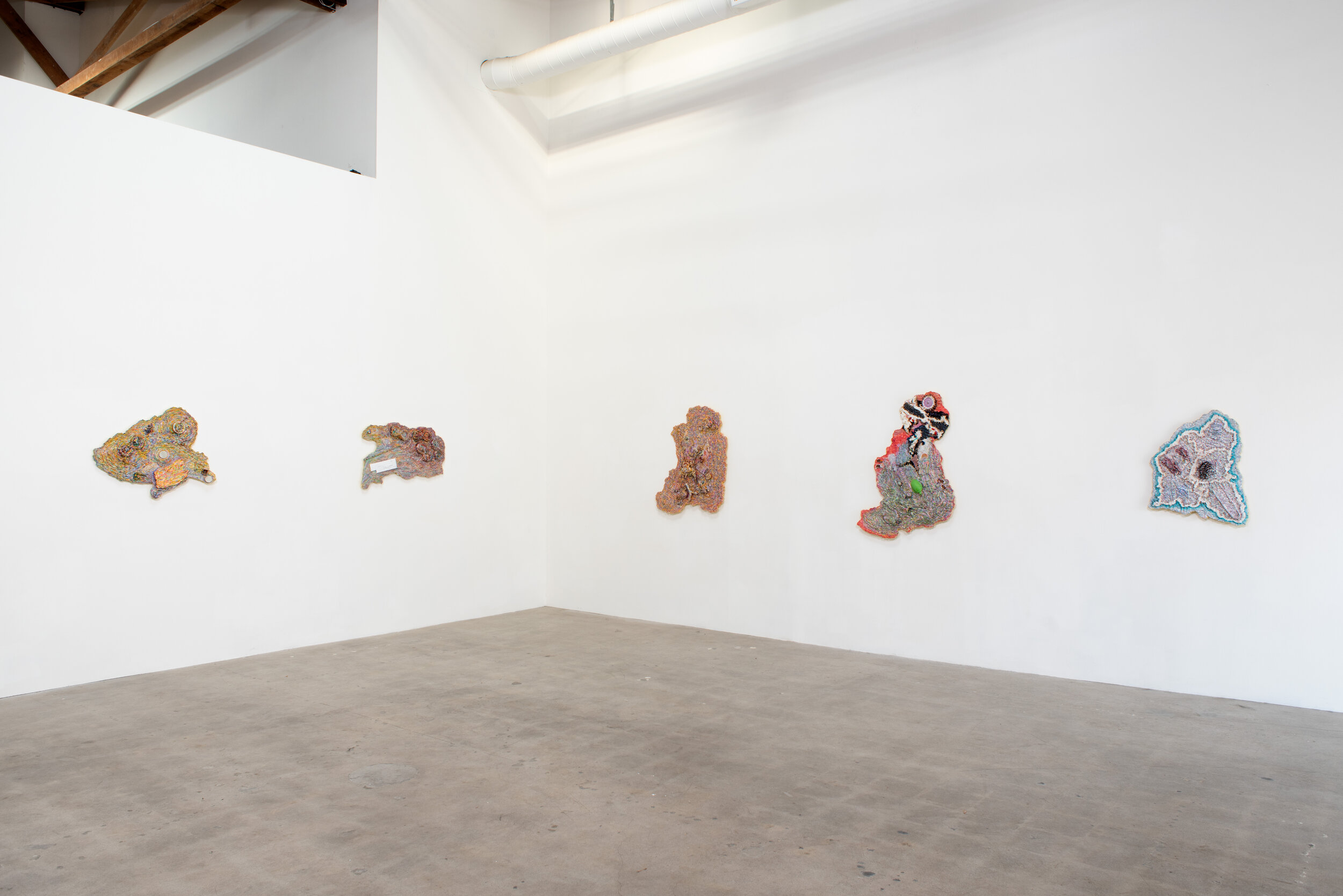Ye Qin Zhu
fragments
January 9 - February 6, 2021












press release
Moskowitz Bayse is pleased to present Fragments, an exhibition of new paintings by Ye Qin Zhu. The works will be on view from January 9 through February 6, 2021, marking the artist’s first exhibition with the gallery.
Ye Qin Zhu’s recent paintings embody an agitated mind’s wavering attention—humming with fixation and aversion—split between micro and macro moments. Like a dense, excited school of fish darting in and out of sunbeams, Zhu’s marks follow the paintings’ topographies, forming visual currents and traceable passages. At the same time, the eleven continent-shaped paintings are cut from a unified sheet. Similar to the tectonic plates that broke from a single mass eons ago, the drifting pieces have evolved uniquely, and yet inklings of kinship scatter throughout. This series and the works’ respective titles form a poem whose limbs and lines have been separated. Without sequence, their positions are like shards of memory stewing in the mind, a frayed network marked by continual renewal and revision. The works’ supposed brokenness, offset by Zhu’s delicate application of tiny iridescent brushstrokes across the pictures’ surfaces, suggests an attitude of meditative healing and an understanding of painting’s role as a luminous throughline between the estranged.
Indeed, Zhu’s hand makes itself felt throughout these paintings in the thousands of micro-decisions that account for their uncannily seductive, unstinting surfaces. Take for example the widespread found and applied objects—in addition to providing direction to the swarming brushstrokes, the objects serve to link the paintings’ spiritual momenta with the physical world’s concrete trappings. Again, the paintings read like islands of memory, where retained imagery swirls in fast-moving emotional tide pools, assuming deeply subjective and ever-volatile meanings; and, like memory, the paintings’ cohesive whole is hardly discernible and somehow beside the point. Rather, Zhu centers the uncodified relationship between the shards, which comes to form the work’s spiritual architecture.
This intangible architecture electrifies the paintings’ frayed edges, which are lined with a warm reflective color. Moving from the artist’s spirit that animates to the materials that record and contain, Zhu pushes the appearance of objects to convey human ideas of empathy and interdependence. This is felt as the paintings lift from the walls—mounted on thick cleats—without clear orientation, as if hovering and reassembling in relation to the viewer, who imagines them pulling together. Or, the pieces may find themselves parsed by the physical architecture’s dimensions, where the edges of space and emotions become relative and negotiable. An uncommon approach to painting, which traditionally asks that each artwork be a discrete object, Zhu’s works embrace the possibility of communion with all things severed and distant. From this, a model of a healing, supportive humanity begins to emerge, with Fragments offering a guide to compassionate living informed, not stifled, by the strangeness of separation.
download pdf


